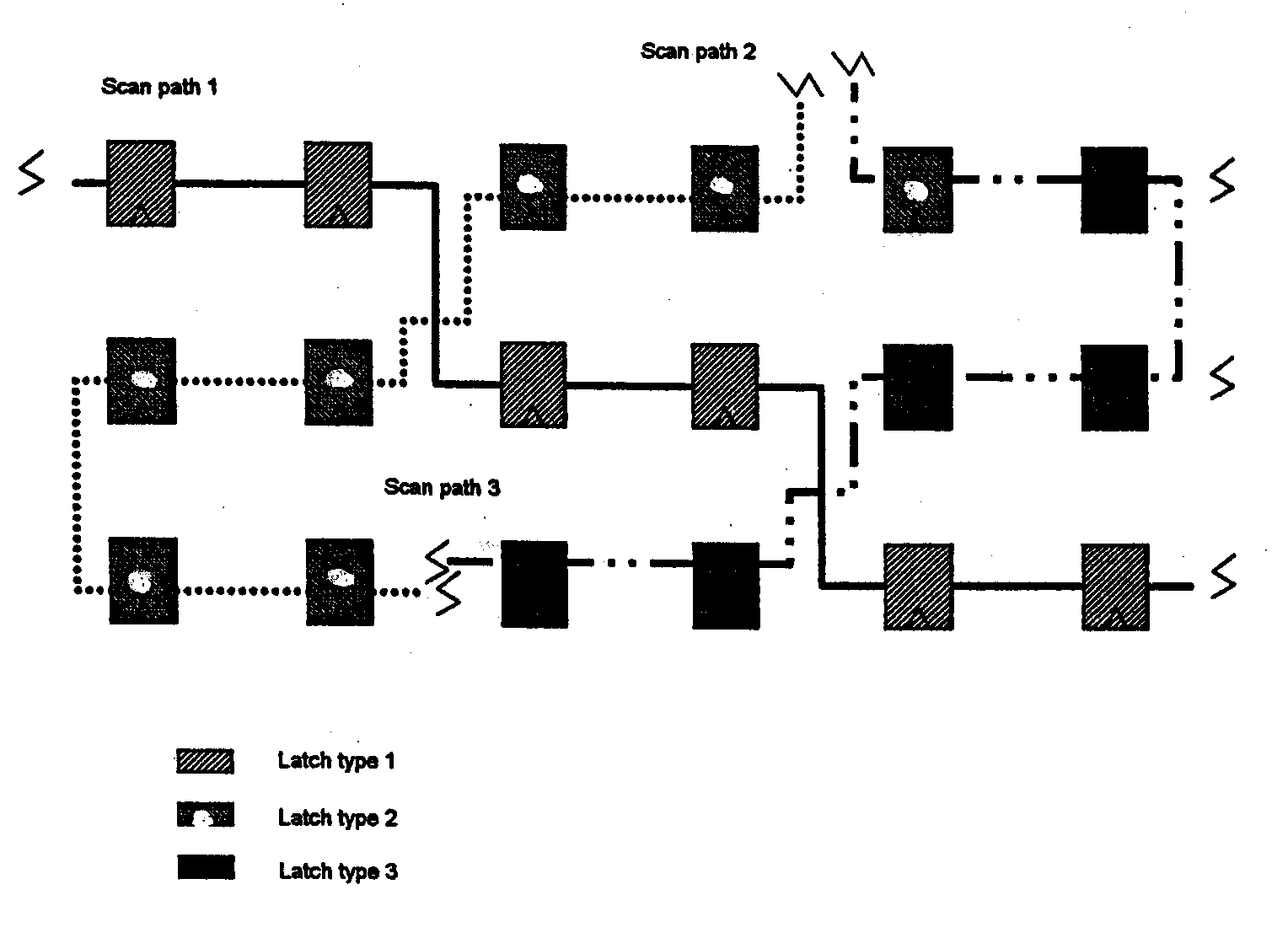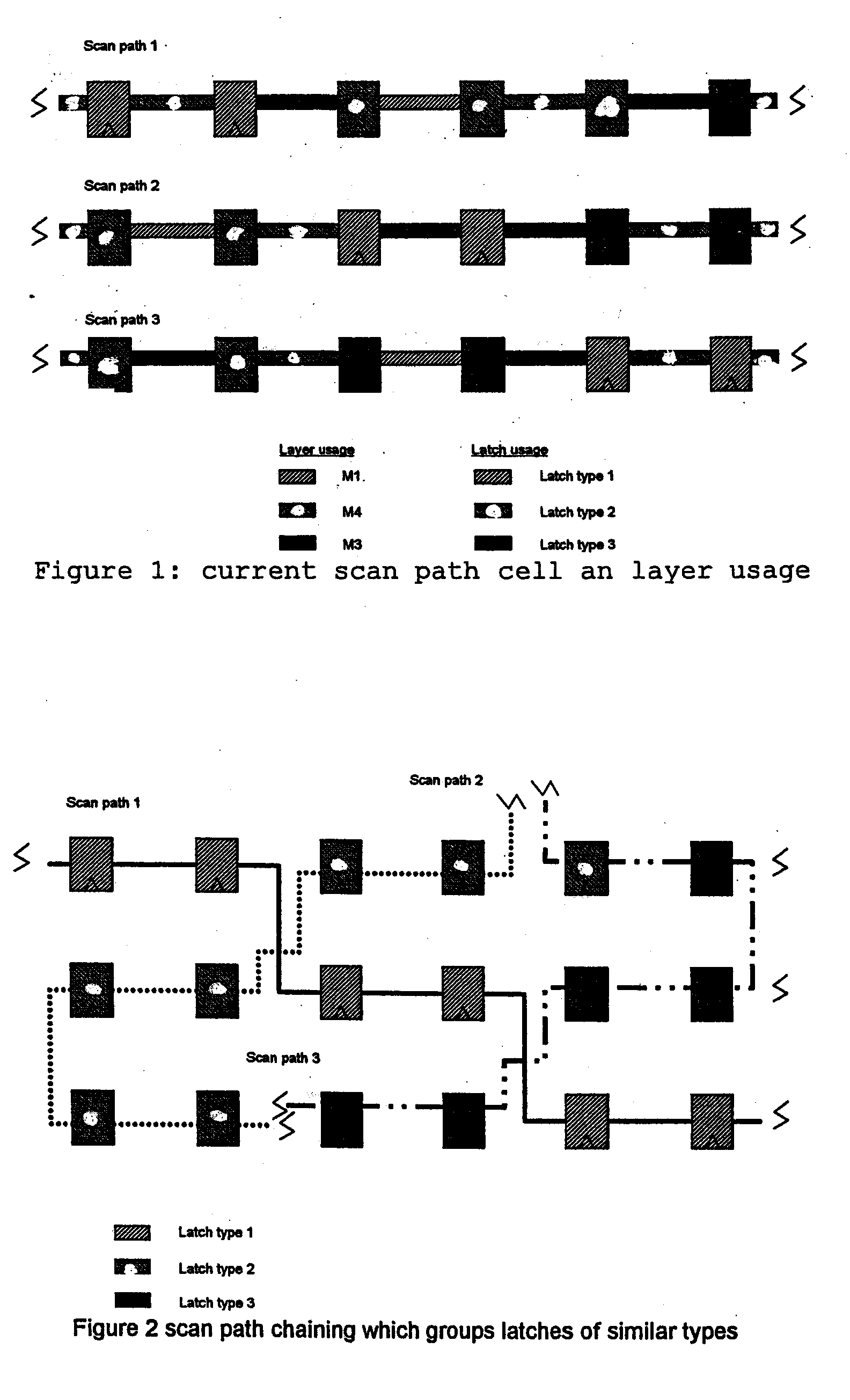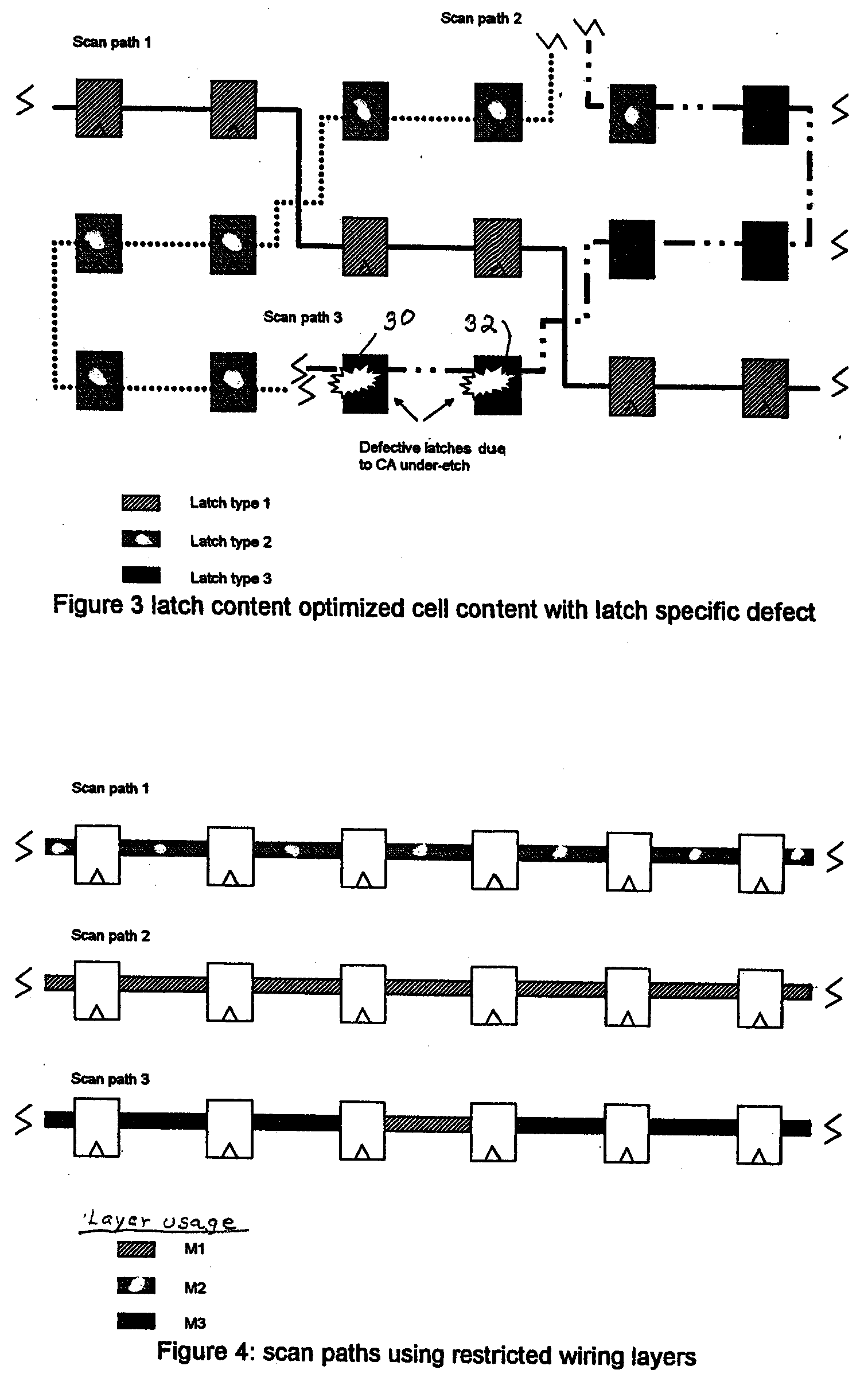Designing Scan Chains With Specific Parameter Sensitivities to Identify Process Defects
a scanning chain and sensitivity technology, applied in the direction of program control, instrumentation, semiconductor/solid-state device testing/measurement, etc., can solve the problems of scan chains that do not lend themselves to this approach, and achieve the effect of improving process defect monitoring, reducing chip surface area, and increasing diagnostic information
- Summary
- Abstract
- Description
- Claims
- Application Information
AI Technical Summary
Benefits of technology
Problems solved by technology
Method used
Image
Examples
Embodiment Construction
[0019] In the current state of the art, latches are wired together into scan chains to facilitate LSSD (level sensitive scan design) or other scan based testing. Latches in a design are gathered together to form scan chains based primarily upon physical design characteristics such as physical locality, voltage island affinity (the circuitry and components on a chip are frequently operated at several different voltage levels, and the various circuitry and components required to operate at a particular voltage level are frequently grouped together in one area of the chip), and scan chain length constraints.
[0020]FIG. 1 illustrates typical scan chains in the current state of the art as being composed of a mixture of cell / latch usage and layer usage. Scan chain / path 1 includes, proceeding from left to right, metal layer M4, latch type 1, metal layer M4, latch type 1, metal layer M3, latch type 2, metal layer M1, latch type 2, metal layer M4, latch type 2, metal layer M3, latch type 3, ...
PUM
 Login to View More
Login to View More Abstract
Description
Claims
Application Information
 Login to View More
Login to View More - R&D
- Intellectual Property
- Life Sciences
- Materials
- Tech Scout
- Unparalleled Data Quality
- Higher Quality Content
- 60% Fewer Hallucinations
Browse by: Latest US Patents, China's latest patents, Technical Efficacy Thesaurus, Application Domain, Technology Topic, Popular Technical Reports.
© 2025 PatSnap. All rights reserved.Legal|Privacy policy|Modern Slavery Act Transparency Statement|Sitemap|About US| Contact US: help@patsnap.com



